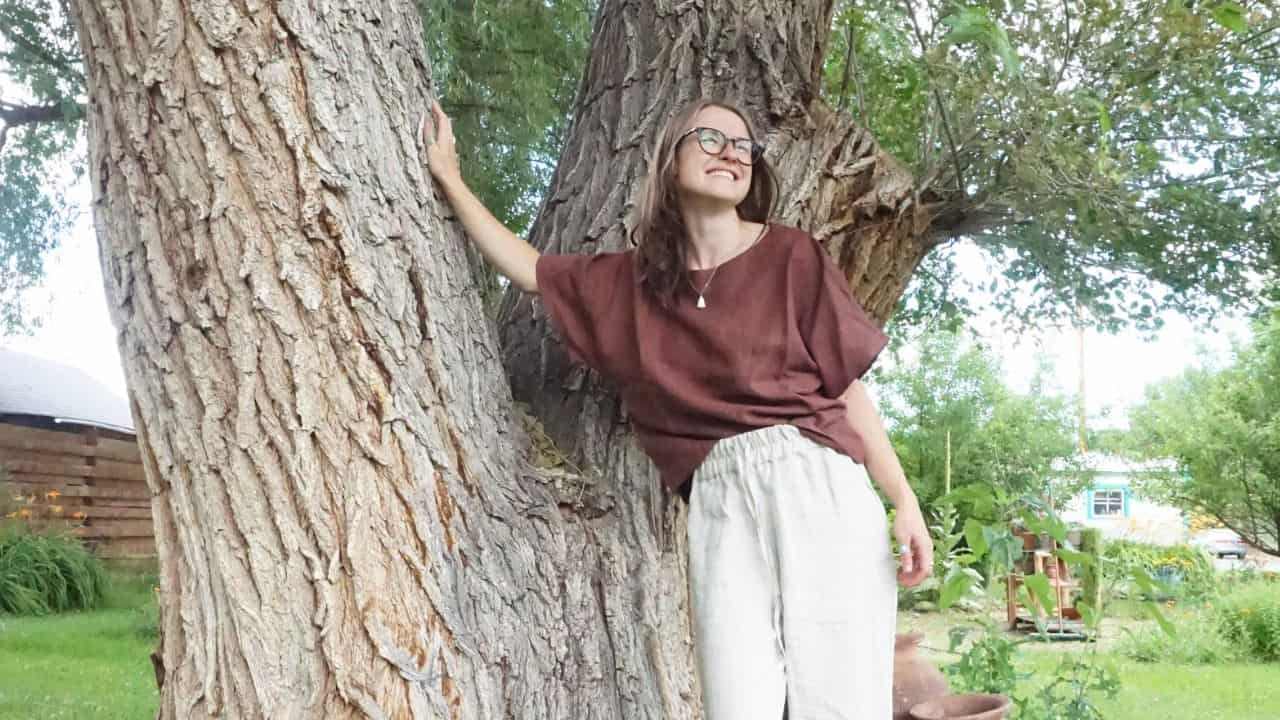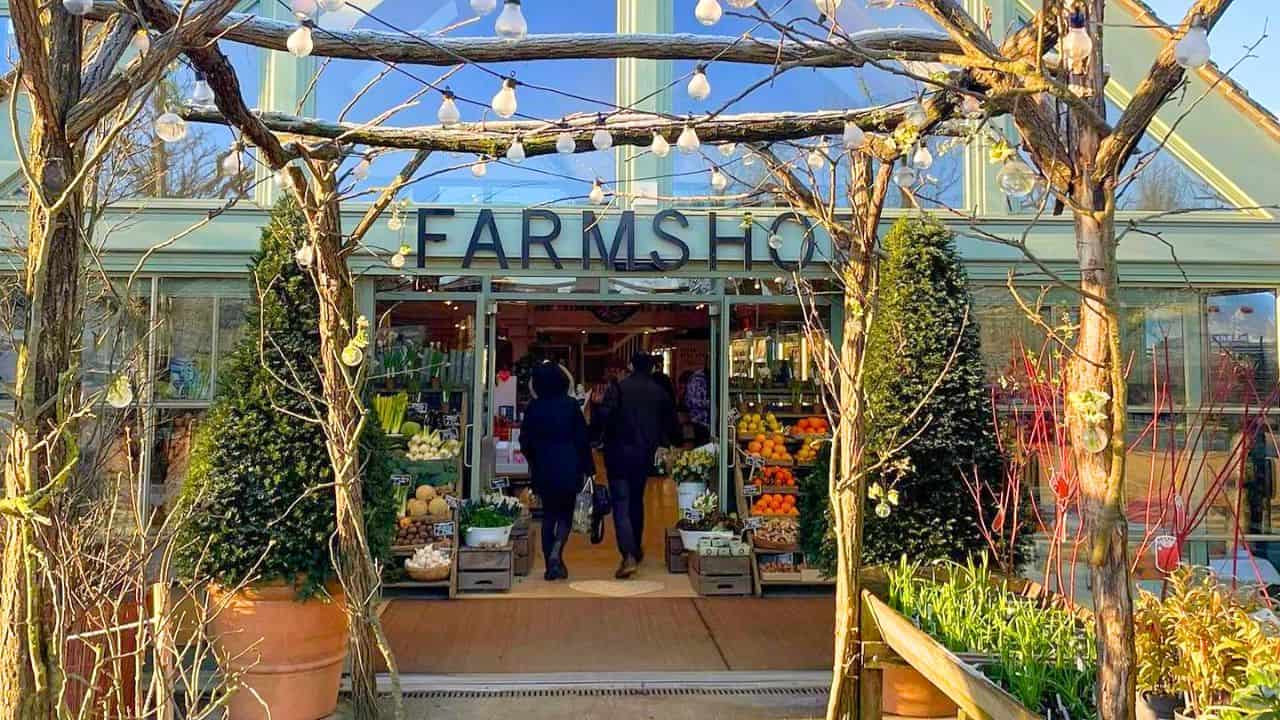Belvoir Farm, located on the border of Lincolnshire and Nottinghamshire, is famous for its refreshing soft drinks made from natural ingredients.
I was invited to visit Belvoir Farm to see how their conservation and rewilding efforts play into their day-to-day and long term processes.
Joined by owner, Pev Manners, he gave me a tour of their various crops, fields, and wildlife areas.
He showed me what his father had done before him to look after the land, from growing everything natural to planting wooded areas for wildlife.
As I toured, it was evident that both Pev and the team pride themselves on the sustainable methods used to grow the produce, and how it stays natural all the way to the bottle.

What do Belvoir make?
Belvoir Farm started growing elderflowers for elderflower cordials in 1984 where they were sold to local farm shops and food stores.
As the company expanded, and more drinks were created, they have since expanded their crops beyond the bottle and currently occupy 2,800 acres of farmland.
They currently grow a wide variety of crops:
- Coppice willow
- Elderflower
- Spring and winter barley
- Feed wheat
- Wheat
- High protein field beans
- Naked barley
Most of these crops are outsourced, yet all play an important role in the local ecosystem.

How does Belvoir farm?
Belvoir Farm is a part of the Countryside Stewardship Scheme, meaning that all their processes balance sustainability, modern farming with conservation and natural habitat conservation.
While visiting, Pev described how they farm as sustainable arable farming’, akin to regenerative farming, as they actively farm sustainably and naturally.
One of the main ways that Pev and the team farm sustainably is through the use of manure – not pesticides.
The manure, which is sourced from local farmers, is left to oxygenate to turn into compost; this compost stops nitrogen leaching and surface runoff.
Moreover, the planting of beans is specifically placed so as to maintain the nitrogen cycle of the land – as beans give nitrogen back into the soil.

Likewise, 60 acres of Coppice Willow is planted each year and harvested for biomass use.
However, the arable crops cannot be considered organic. The farm is slowly moving to completely regenerative agricultural practices, but is not fully there yet.
Despite this, it is through their farming methods that the arable soil’s organic matter is around 6-8%, and is set to increase over time.
This is impressive when put into perspective witht he 75-85% of soil in major EU nations that has less than 2% organic content.
Organic content is incredibly important for soil health, nutrition of food, and the surrounding biodiversity.

How do Belvoir look after the local ecosystem?
Belvoir’s farming methods actively enrich and maintain the land, but they also does more to help support and encourage local wildlife.
Pev reflected on how sustainable arable farming and conservation work affects the farm, and sums it up that “when you look after the land, nature just explodes.”
While visiting the farm, I was greeted by wildlife at every turn: mostly rabbits and hares, but also roe deer, British partridges and kites.

Belvoir Farm’s land is split into multiple areas that supports local wildlife:
- Woodland areas, 8 acres of woodland creation and 75 acres of established woodland
- Wildflower areas, 28 acres
- Areas to produce bird feed, 62 acres
- Hedgerows
- Grass field margins, 13 acres
- Low intensity grassland, 200 acres
Since 1984, Belvoir Farm has planted 10,000 trees to create several woodland areas for local wildlife.
Within each woodland area, there are owl boxes that are home to tawny and barn owls. There are also 50 small bird feeders dotted around the farm.
Pev told me that the forests were essential not only for the bird life and insects on the farm, but also for the rabbits and hares – as they shelter and a place to run to while the fields were being tended to by farmers.
Likewise, the coppice willow is not only ideal for biomass, but also as a safe habitat for the roe deer that have recently been breeding on the site.
Between the woodland areas, there are fields to produce bird feed in order to keep the population well fed throughout the winter months. The 62 acres of bird feed allow for birds all around the area, not just the birds on Belvoir’s farm.

In 2021, Belvoir Farm welcomed the introduction of three beehives, that were introduced as a part of the Countryside Stewardship Scheme alongside 28 acres of wildflowers.
The wildflowers are not only essential to the bees that live in the hives, but also to the wild bees that are attracted to the local area.
The local insect life also thrives amongst the hedgerows that border the fields, providing essential shelter to other wildlife, too.
Wherever there were gaps, Pev was showing me that they were growing blackthorn, hawthorn and field maple to create more hedges and the wild verges are home to dykes for wildlife to drink water from.

Wild verges, and wild areas, are great for rodents as well as insects – meaning that there is enough wildlife to support the owls on the farm.
I could see that there is an incredible amount of birdlife on the farm, including nine red-listed birds that were found during the Big Farmland Bird Count 2022. Pev was proud to note that it wasn’t just one or two birds of each that were found, but an astonishing 50 yellow hammers were recorded on site.
How does Belvoir Farm involve the community?
The Big Farmland Bird Count allowed Belvoir Farm to invite the general public onto the farm to birdwatch.

There are more ways in which Belvoir involves the local community.
For example, while I was visiting during the peak of elderflower season, which only lasts a few weeks each year, the general public were encouraged to come and pick the elderflowers they need for their cordial – and get paid for their efforts.
In fact, during the elderflower season, the public are able to earn £3 per kilo, with some earning as much as £150 a day.
Outside of elderflower season, Belvoir donates wooden pallets to Support & Connections, who are a service provider for adults with learning difficulties and disabilities who help them learn new skills.
While there are no direct workshops on the farm, Belvoir also directly involves the community by giving waste materials to local businesses for them to be upcycled.
Moreover, they have a small share in a community care farm, where some elders are growing in their agro-forestry scheme.
Finally, Belvoir are currently reviewing how to get to Net Zero, as well as involving themselves more with neighbouring farmers and the community.

How is Belvoir Farm sustainable?
In addition to all the efforts made for encouraging the local ecosystem to thrive, Belvoir Farm makes great efforts to maintain sustainable practices.
For example, Belvoir Farm is a zero waste to landfill company, meaning that everything inside and outside of the company is recycled, upcycled or decomposed in a sustainable way. Belvoir are going to continue to have their waste streams audited by Certified Sustainable.
One of the ways in which they are zero waste is through the packaging, as it is entirely recyclable and the bottles themselves are made from 55% recycled glass.
They also plant trees in order to offset carbon in addition to maintaining the local biodiversity.
Moreover, the factory and offices on the site are powered by green energy, which is also produced on site. The 40 acres of willow grown on site is used for biomass as a fossil fuel replacement.
Pev also told me about the solar panels that were recently installed, that are used to generate power (in excess to what the factory and offices demand). The solar panels are a 340 kWp solar photovoltaic array roof which is on top of the factory, and they offset 67,989kgs of CO2 per year.
While they are not currently running only on their own electricity, they are aiming to be running on 100% renewable sourced power by 2025.

While Belvoir Farm may not be Net Zero, or entirely organic yet, that does not take away from the amount of work put into the farm to encourage biodiversity, regenerative agriculture and a more sustainable future.
A great portion of the land is dedicated to replenishing soil health and successfully reflected in the numbers of animals, birds and insects at every turn.
From the soil’s organic matter content to the return of red listed birds, sustainable farming always has and will continue to be the core of Belvoir Farm’s identity.
Great drinks with a positive impact, I am very excited to see what happens on Belvoir’s Farm in the future.
Want to take your understanding one step further?
- Learn more with the best documentaries on conservation or the books to read to discover the UK with
- Understand the complex issues around plastic pollution
- Find out where to find some of the most rad forests in the UK or which serene nature reserves to go to
- Discover how our peatlands and our seagrass meadows are the key to a Net Zero UK
- See what you can do to help conservationists with these great apps










